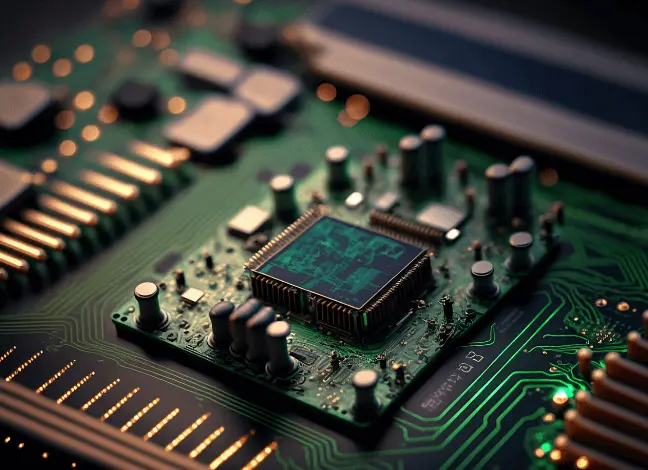Embedded systems are the invisible workforce behind numerous devices we use or interact with. These small computing units designed to perform specific tasks efficiently and reliably are at the heart of modern electronics, from mobile phones and tablets to microwaves and washing machines.

Microcontroller programming is necessary because it gives these embedded systems life and the direction to carry out their specific tasks. It is similar to the computer programs people write to guide computers, making them work, albeit at a smaller and specialized scale.
Microcontroller programming enables these embedded devices to work in tandem with hardware interfaces, read input data from different types of sensors and then execute the required commands, all for a minimum amount of computational cost and power.
Whether using Internet of Things devices, smart power tools or powering robots to perform specific tasks, embedded devices and programming are the keys. This guide examines some programming languages and how they are used to develop such intricate yet powerful devices.
Understanding Microcontrollers

The main components of microcontrollers are as follows.
- CPU: The central Processing Unit is the brain of the microcontroller, having a memory unit and an arithmetic unit. The CPU performs the instructions stored in memory, both logical and arithmetical.
- Memory: There are two primary components of memory.
- Program Memory (ROM): This is where the device’s firmware is stored, and the firmware is responsible for booting up the device.
- Flash Memory(RAM): This is the volatile memory that is used at the stages of program execution. It stores different variables and stacks.
- Input/Output Ports: These are the main ports or connections the embedded device communicates with actuators, sensors and other external devices.
- Peripherals: Some essential peripherals are attached to the microcontrollers, such as Pulse Width Modulator (PWM) controllers, Analog Digital Converters (ADC) and communication ports such as SPI and I2C.
Programming Languages
Two types of programming languages can be used to instruct microcontrollers: high-level and low-level. Both approaches have pros and cons, and it all depends on whether you want more control by choosing a low-level language such as assembly language or more development speed with the high-level Embedded C.
Let’s look at both languages separately.
Assembly Language
Assembly language lets you go in-depth into the microcontroller and program parts, such as registers and hardware components. This allows the programmer to precisely control the resources the controller uses and the timing of executing the instructions.
Thus, if there are constrained resources or you are developing real-time systems where the system’s timing is integral, assembly language is the go-to choice as you can program components that can give you greater control over resource and time constraints.
However, some things could be improved in assembly language. As you take control of the low-level details, it becomes increasingly complex to code. To have a complete grip on assembly language, you also need a good idea about the microcontroller’s architecture.
Not only is it challenging to learn to code in assembly language, but solutions developed in assembly language are more portable to different platforms than high-level languages. Moreover, the development time of solutions in assembly language is also incredibly high.
Embedded C
Embedded C is a high-level language that gives you the ability to program controllers in a faster time frame. As it is more human-readable, C is far easier to understand and learn to code in. It is also highly maintainable, making it suitable for collaborative projects and long-term support.
Solutions in C can also be easily ported to different devices and architectures as it is supported by most of them. Moreover, several other libraries and toolkits are available with C, giving you added flexibility and help coding your microcontroller.
The drawbacks of C are the pros of assembly language. You can’t get the same control over resources when using C. This can create a resource overhead that can be a cause of serious concern where there are limited amounts of resources available.
Interfacing with Sensors and Peripherals
The real magic of embedded systems happens when different types of sensors and peripherals are paired up with microcontrollers. Embedded systems rely on stimuli from the external environment so that they can perform their required task. The sensors provide this stimulus.
Sensors enable the controllers to see and feel the environment. They provide essential input to the controller by responding to parameters such as pressure, light, sound,and motion.
On the other hand, peripherals are the components that enable the microcontrollers to connect and control the sensors that are attached to them.
For example, Ultrasonic sensors can be used for distance estimation. These sensors emit sound waves and then measure their reflection time to calculate distance. You can interface them with the controller using digital pins to collect and control data.
Light sensors can be used for different purposes in combination with a microcontroller. You can interface these sensors using analogue pins and ADCs for bi-directional data transmission.
Applications of Embedded Systems
Microcontroller programming has found its way into many diverse fields and application areas. Different embedded systems are deployed to perform various tasks, especially in the Internet of Things (IoT) and Robotics fields.
Take IoT, for example. We have all seen a recent boom in home automation devices. They have installed microcontrollers to regulate heating and cooling, voice-controlled lights, and automated gate control.

Environmental monitoring IoT devices also use microcontrollers to monitor air quality, humidity and temperature, enabling real-time data collection and providing valuable inputs to control systems.
In robotics, we can see embedded systems in autonomous vehicles in which these small systems control actions such as braking and providing data for collision avoidance and navigation.
They are also deployed in small drones and quadcopters, giving them navigation, flight stability capabilities and data transmission to different systems or drones.
Microcontrollers are the basis of many devices across different applications and fields of technology. It would be best to have a good grip on the programming languages to use these microcontrollers. Once you have that, you can learn how to use different sensors and peripherals together with the microcontrollers to make devices that can be used for many tasks.
Embedded systems and their programming give people plenty of chances to innovate and create exciting personal projects. We advise you to start right away with the basics, and we hope that soon enough, you can create brilliant embedded systems.
